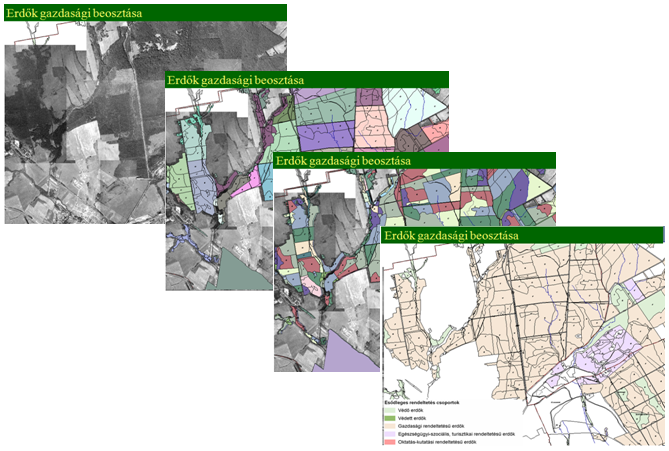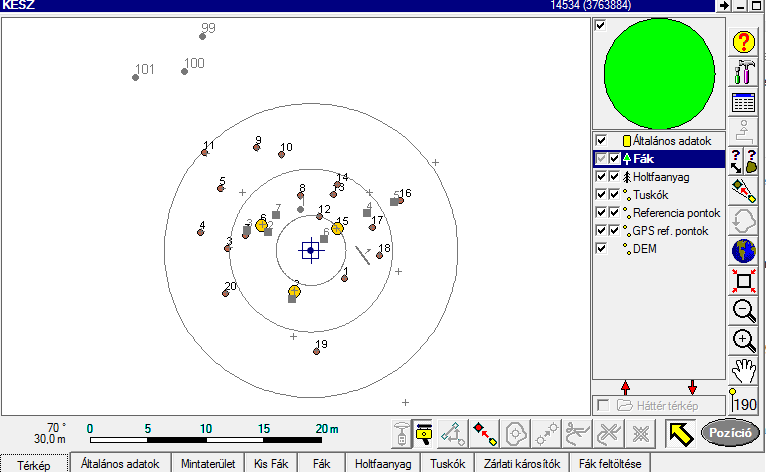The relationship between a forest inventory and a forest plan
Forest planning in Hungary - formerly known as management planning - dates back to Empress Maria Theresa. Currently this duty is performed in the framework of district forest management planning, which produces District Forest Management Plans (DFMPs). Plans are normally drafted for an interval of 10 years covering all of the country's forest land areas defined as such in the Forest Act across 148 forest districts subject to management planning. DFMPs form the basis managing forests legally, sustainably, in harmony with the societal interests and with a view to ecological and economic balances, which is conducted effectively in cooperation between forest managers, local governments, forest and other peer authorities.
Sub-compartments spanning fro 0.01 hectare to tens of hectares, which are economically and frequently ecologically uniform areas, form the basic units of district forest management planning. DFMP sampling is carried out at sub-compartment level and recorded stand characteristics are also averages that pertain to the whole area of a forest sub-compartment. These sub-compartment level descriptions are combined to form a DFMP and they also for a major part of the National Forest Database (NFD).
The definitions used in the course of forest resource assessment are those used by the FAO and COST E43, which supports meeting international reporting requirements directly, without additional data conversions. As the two systems use different definitions of the term 'forest', there are two different sizes of forest land area on record and the area identifies in our statistical forest inventory is much larger.

District forest management planning: developing the economic calibration (Excerpt from a presentation of A Jagicza)
Stand characteristics in our forest inventory are based on specimen level sampling (as discussed in detail in the description of the methodology). Sampling has been designed to yield data which are representative first of all of larger territorial units (county, regions, etc.). As a result of the sampling technique, the outcomes lend themselves to use in higher level policy decisions, medium and long term modelling and monitoring changes in the status of the environment, and are in each case suitable for statistical processing and analysis. Naturally, information can be retrieved from the collected parameters to show occurrence (e.g. tree species, shrubs), normative indicators (stand, dead wood per hectare, etc.) and temporal changes of the same even at sampling point level while displaying selected elements.

Statistical forest inventory: map view of sampling plots
Another major merit of forest inventories is the ability to collect information of parameters that classic management planning would fail or would require major extra spending to capture due either to methodological difficulties or lack of resources. These include information on deadwood (quantity and distribution of stationary, lying dead wood and stumps), data about small trees and on wildlife related disturbances such as the degree of damage to apical buds.
The simultaneous operation of two systems holds advantages for Hungary, just as for many other countries. On the one hand, sufficient data are available for utilisation and analysis use at a lower (forest sub-compartment level - data series in an economic or statistic approach) and higher level. On the other hand, the two systems efficiently complement and support each other, for instance forest resource assessments can borrow ourcomes from the NFD (such as designation, naturalness) and the DLFM can also utilise the results of forest inventories (such as information on dead wood, distribution of small trees).